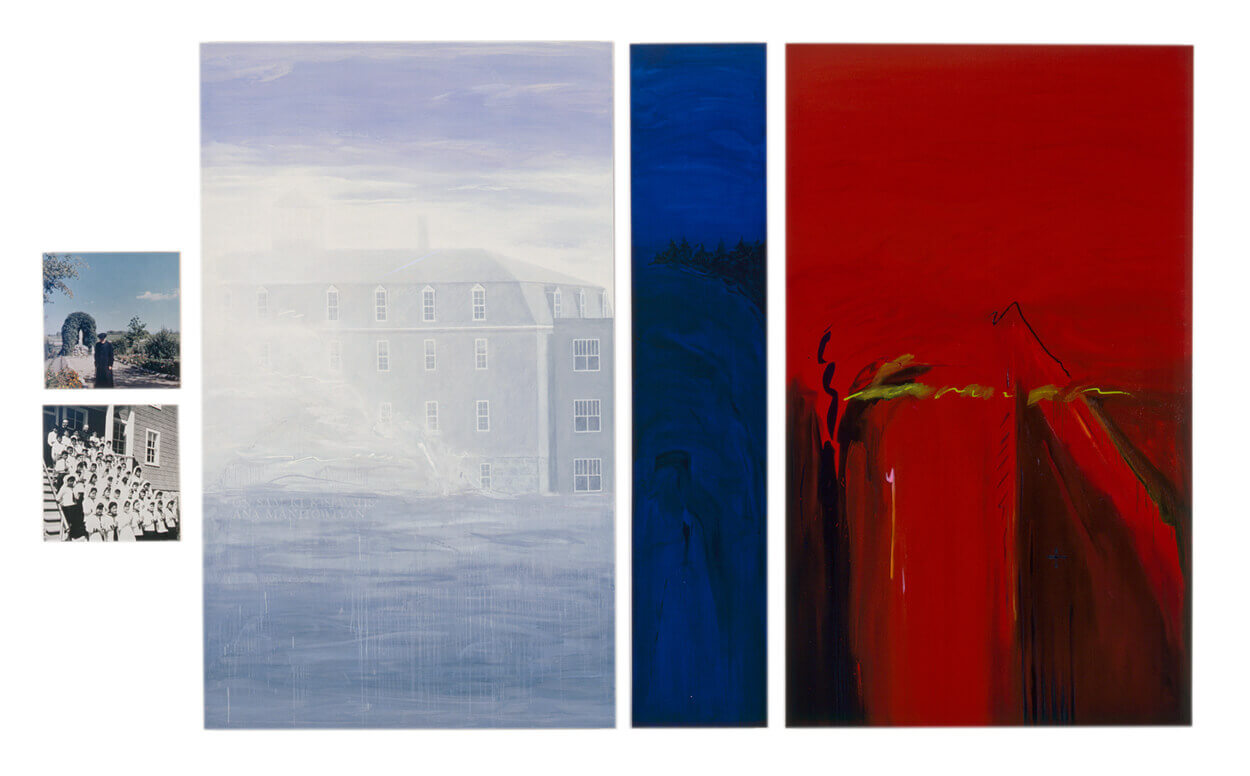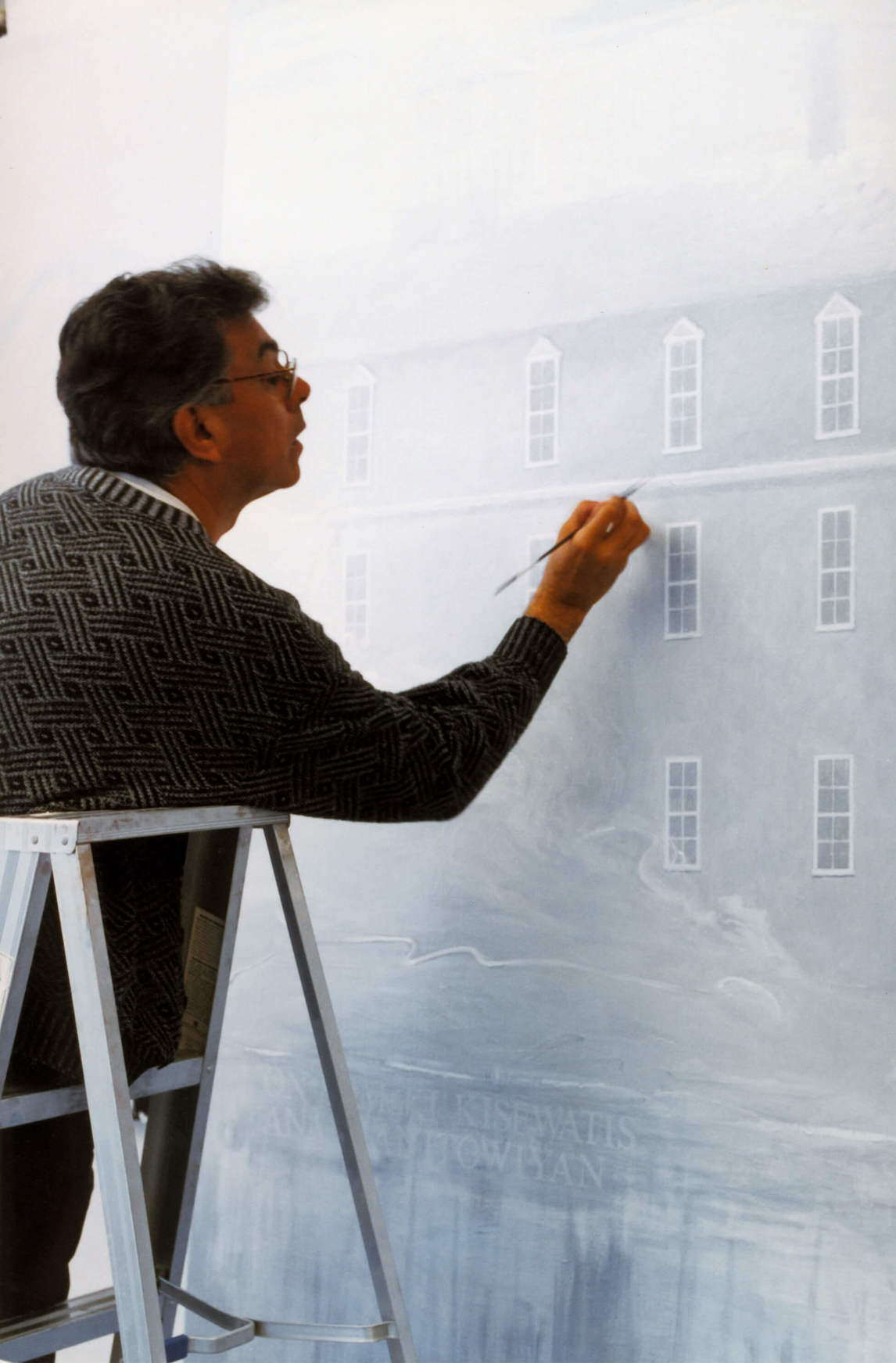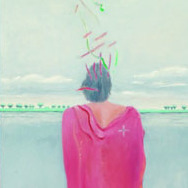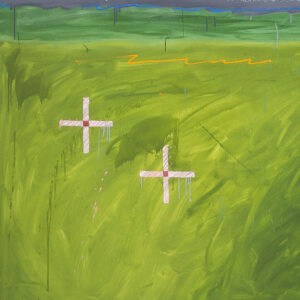Sandy Bay 1998–99

Robert Houle, Sandy Bay, 1998–99
Oil on canvas, black and white photograph, colour photograph on canvas, Masonite, 300 x 548.4 cm
Winnipeg Art Gallery
After Houle read Ruth Teichroeb’s book Flowers on My Grave: How an Ojibwa Boy’s Death Helped Break the Silence on Child Abuse (1998), an account of the suicide of a boy victimized by multigenerational residential school violence on his reserve, he created this deeply emotional work completed over eighteen months.

The book activated Houle’s memories of the Sandy Bay residential school. The work reflects the cultural tradition of telling—remembering, recounting, and recording a difficult experience as a path to healing. It functions as text in the absence of writing, as history in the absence of official account. Its narrative elements are a passage through memory that begins with two photographs as evidence and moves through a majestic resurrection in which the school’s ghostly form, in monochromatic tones of light grey and blue, seems to emerge from the landscape.
Sandy Bay consists of five parts, meant to be viewed from left to right, and morphs subtly from representation to abstraction. Two mounted, enlarged photographs on Masonite are situated at the work’s far left: one is of the first priest to be buried in the reserve cemetery; below is an image of a First Communion class that includes Houle’s sister Marilyn. In a clouded area in the middle left section of the painting are words from a hymn that his mother used to sing to him and that would come to be used during family burials: “ON SAM KI KISEWATIS ANA MANITOWIYAN” (“Oh you are so kind and so treasured although you are god-like”). Each window on the building above takes on a metaphorical reference to one of Houle’s siblings. To the right are two panels: one depicts the landscape of Sandy Bay rendered in deep blue, the other a landscape in red with Houle’s trademark gestural line in green. Other characteristic marks include references to traditional quillwork and the morning star.
This healing work exemplifies Houle’s approach and style of symbolically organizing every element. The artist’s calming brush balances the inner tempest, finding the quiet centre within each of us.

 About the Author
About the Author
 More Online Art Books
More Online Art Books
 Acknowledgements
Acknowledgements